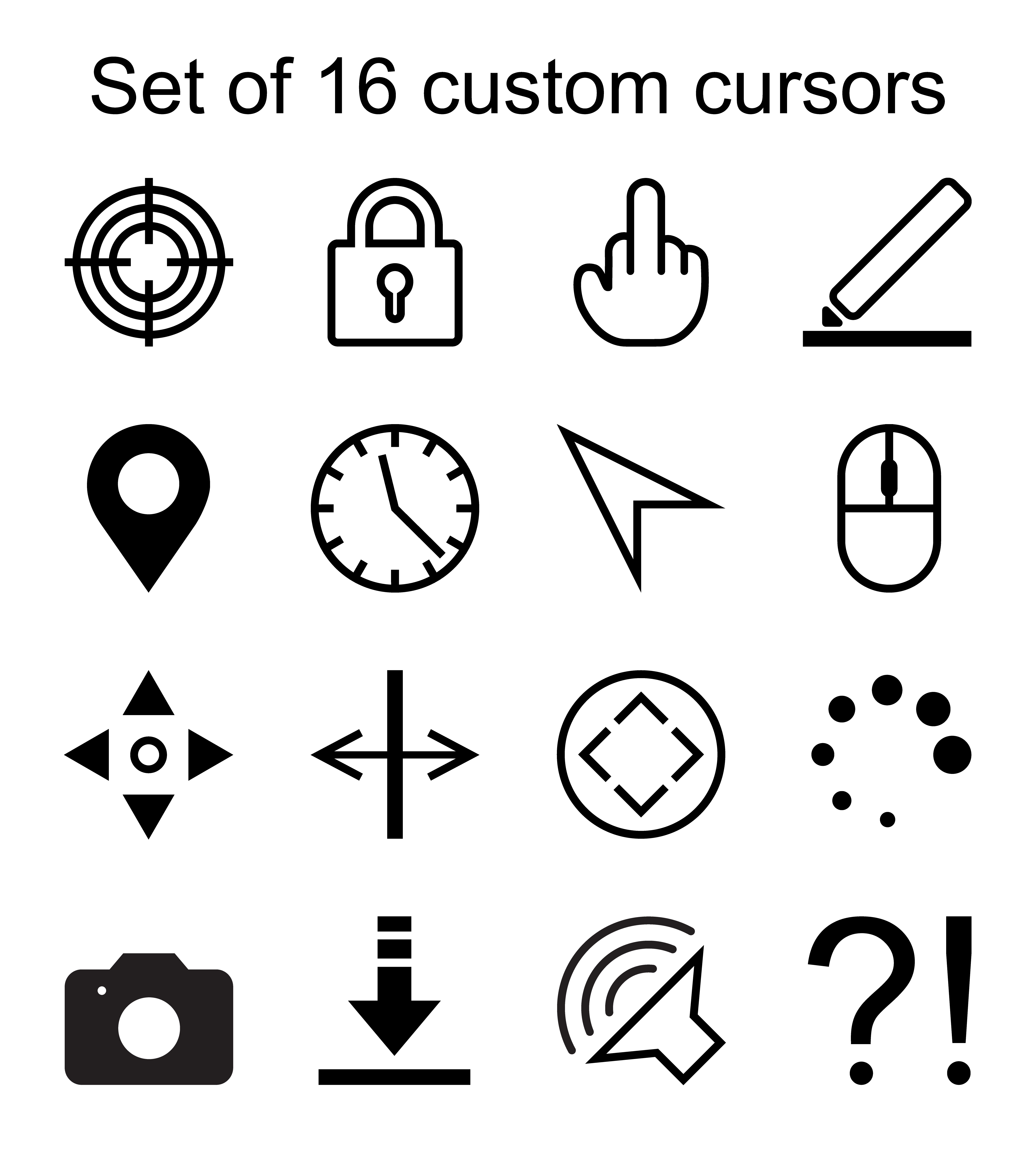

Hover your cursor in this area to see a custom CSS cursor example. The browser will then load the cursor image and apply it in place of your OS cursor any place the cursor is declared. What a custom cursor isĪ custom cursor is when you use CSS’ URL function to load a custom cursor image. The web being able to borrow these OS-level affordances is huge, in that it helps people understand how a piece of web UI can be used, even though it may not look like its OS equivalent.

These user-facing state changes are a regular part of using your Operating System ( OS), and provide a vital clue for how a piece of OS interface, or an app running in the OS can be interacted with. This includes a pointing hand icon for links, resize and text entry indicators, zooming, dragging affordances, etc.Ī four by two grid of CSS cursors, including OS default, text edit bar, link pointer, move, open drag hand, zoom in, column resize, and cell. What a custom cursor isn’tįirst off, I’m not talking about the ability to change a mouse cursor's state. This is to say that adding a custom cursor might seem like a fun, fancy thing to do at first, but has some serious inclusive design considerations to be aware of. One of the worst things about CSS is that it lets us make websites and web apps look like anything we can dream up. One of the best things about CSS is that it lets us make websites and web apps look like anything we can dream up. This might seem like a niche complaint, and you know what? It is. So remember to disable the custom cursor in mobile view.I believe that letting CSS load a custom cursor was a mistake. When you swipe to browse a website on mobile, the custom cursor will just stick and float around, interfering with the user experience. Disable on MobileĬustom cursors don’t work well on smaller screens. Mainly because these big brands have multiple websites for different regions and they want to create a consistent design across all websites.Īlso, using custom cursors in non-profit websites can be very unthoughtful as well. There’s a reason why the big brand, corporate, and eCommerce websites, like Uber, Airbnb, Shopify, never use custom cursor designs. Know When to Use ThemĬustom cursors are not appropriate for all types of websites. This will help users avoid the frustration of trying to click the right link with a giant blob cursor. A good practice is to use multiple custom cursors, especially adding a simpler pointer for the menu sections. Using large custom cursor designs with weird shapes is all fun and games until you have to click on a small text link. Rather than making the cursor entirely stylistic, focus on designing cursors that improve the user experience. Like encouraging users to click on a link or image to view more. The main goal of using a custom cursor should be to generate more interactions. Tips for Designing Custom Website Cursorsīefore you get started on designing custom cursors, remember to follow these tips and guidelines to ensure you don’t overdo it.

It should give you an idea of how far you can go with custom cursor designs. It features a colorfully animated cursor that leaves a trail whenever you move the cursor around. This website has one of the most unique custom cursors we’ve seen.
#Custom cursors how to
The following examples will give you an idea of how powerful a custom cursor can be and how to leverage them. And more importantly, to make your website stand out from the crowd. Give users directions on where to go and what to do. Instead, you can use a custom cursor to make it more fun for the users to interact with the website. Yet the cursor has the same old system default design. Imagine designing an incredible website experience for an event page with animations, parallax effects, and moving objects. However, you can use a custom cursor to make your website design more immersive. You can make the cursor change, add hover animations, click effects, and much more to create a memorable experience.

With the help of HTML, CSS, and a little bit of JavaScript, you can design unique cursor designs for websites. The same can be done on a website design, except custom website cursors are unique to each individual website. On your computer, you can easily change the cursor using the system settings. Simply put, a custom cursor is changing the default icon design of the mouse cursor (or pointer). Presentation Templates PowerPoint & Keynote Fonts Sans Serif, Script & More Graphic Templates Logos, Print & Mockups


 0 kommentar(er)
0 kommentar(er)
